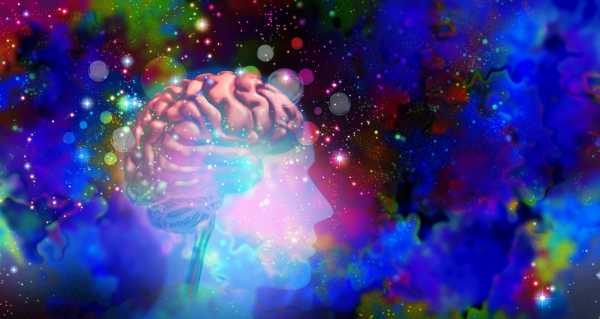
The Journal of Molecular Psychiatry has released a meta-analysis of several studies and literature reviews on the relationship between serotonin levels and depression. The researchers found “no convincing evidence that depression is associated with, or caused by, lower serotonin concentrations or activity,” noting that popular acceptance of the chemical-imbalance theory “may discourage people from discontinuing [SSRI] treatment” and lead to “lifelong dependence on these drugs.”
The findings were presented as news, but simply confirm what has been known for at least two decades. There is not and has never been evidence that depression is caused by low serotonin levels.
Advertisement
How did psychiatrists come to believe in the chemical-imbalance theory in the first place? Consider the history provided in Anne Harrington’s Mind Fixers, the most thorough book-length treatment of the psychiatric industry’s attempts to pin down the biological origins of mental illness. Harrington chronicles the rise of both depression as a diagnostic category and selective serotonin reuptake inhibitors (SSRIs) as a frontline treatment method.
Until the middle of the 20th century, “depression” was rarely diagnosed. Psychoanalytic theory held that all neurotic conditions stemmed from anxiety. Depressed mood and affect were thought to be caused by unaddressed anxiety.
Biologically minded reformers sought to displace their Freudian predecessors in the middle of the 20th century. They claimed that depression could, in fact, manifest as a standalone condition independent of some unresolved anxiety in the subconscious. A series of medical discoveries led those psychiatrists to believe that depression was caused by a deficit of either serotonin or norepinephrine in the brain.
In 1953, patients at a tubercular sanatorium in New York were given an antitubercular drug called iproniazid. While it wasn’t particularly effective in allaying their tuberculosis, it had a marked effect on patients’ moods. As one study noted, bedridden patients who had been given the drug demonstrated such “vigor” that they began introducing “disciplinary problems” on the sanatorium wards. Pictures of dancing tubercular patients at Sea View Sanatorium in Staten Island were featured in Life magazine. As the drug was used to treat chronic patients in mental hospitals to similar effect, the biological upstarts in psychiatry saw this as potential evidence of the condition’s biological origins.
Two years later, scientists at the National Institutes of Health were studying the effects of the sedative resperine on rabbits. After being given the drug, the rabbits exhibited symptoms that the researchers felt, in Harrington’s words, “amounted to a reasonable facsimile of depression.” Autopsies of the rabbits found that resperine had caused their brains to “dump” their stores of serotonin. After giving a newly sedated group of rabbits iproniazid and another antidepressant, however, “the rabbits’ serotonin levels stayed high, and the animals stayed cheerful.”
Advertisement
This study contributed to the belief that depression was caused by serotonin deficiencies in the brain. Later animal research by Gordon Whitby and Georg Hertting found that tricyclic drugs blocked norepinephrine receptors, leading to more of the chemical in the bloodstream and improving the animals’ mood. This led to the use of tricyclic antidepressants in human patients, and, when the side effects of those drugs became unbearable, SSRIs were created to replace them.
The original SSRIs were marketed with explicit reference to the chemical-imbalance theory. As Harrington highlights, Pfizer ran advertisements for Zoloft using language like this:
Just as cake recipes require you to use flour, sugar, and baking powder in the right amounts, your brain needs a fine chemical balance in order to perform its best.
While individual patients found success with the drugs, they were never able to significantly outperform placebos. And try as they might, psychiatrists were never able to establish the causal link between serotonin levels and depression in human subjects that was the predicate for SSRIs in the first place.
The primary reason psychiatrists have tried so hard to ground depression in biology is to “de-stigmatize” the condition. If depression is the result of an inherited brain defect, you can’t blame a person for being depressed.
Subscribe Today Get weekly emails in your inbox Email Address:
This rhetorical move may have made it easier for the proportionally small group of people with deep and persistent depression to seek treatment. But that noble lie has come at a cost. Today, more than 37 million Americans are on antidepressants. About 500,000 of them are children. The drugs are highly addictive, and users often experience intense withdrawal symptoms if they attempt to wean themselves off. Others experience a “flattening” effect, sapping them not only of their lowest lows but their ability to experience the fullness of joy.
People end up on these drugs for all sorts of reasons. Some underwent years of talk therapy and turned to the drugs as a last resort. Others were put on the drugs after a death in the family, job loss, or marital problems. Others—and they exist in far greater numbers than the psychiatric community would have you believe—were feeling sad, saw a psychiatrist, and walked out the door with a prescription for an SSRI.
There are some things you should feel sad about. Suffering is part of the human condition. Even psychiatrists acknowledge as much. But their behavior suggests they don’t appreciate the distinction between sadness and what they call depression. One in four American women over 60 is on an SSRI. So are one in ten men. It is certainly true that, for some people at some times, SSRIs are an effective treatment. So is electroshock therapy. But we don’t know why either of those treatments work, and, in the case of SSRIs, we don’t even know whether they work. And there is no conceivable justification for prescribing mind-altering drugs to 11 percent of the American population when we can’t even establish that they do what they purport to.
Advertisement
Sourse: theamericanconservative.com






